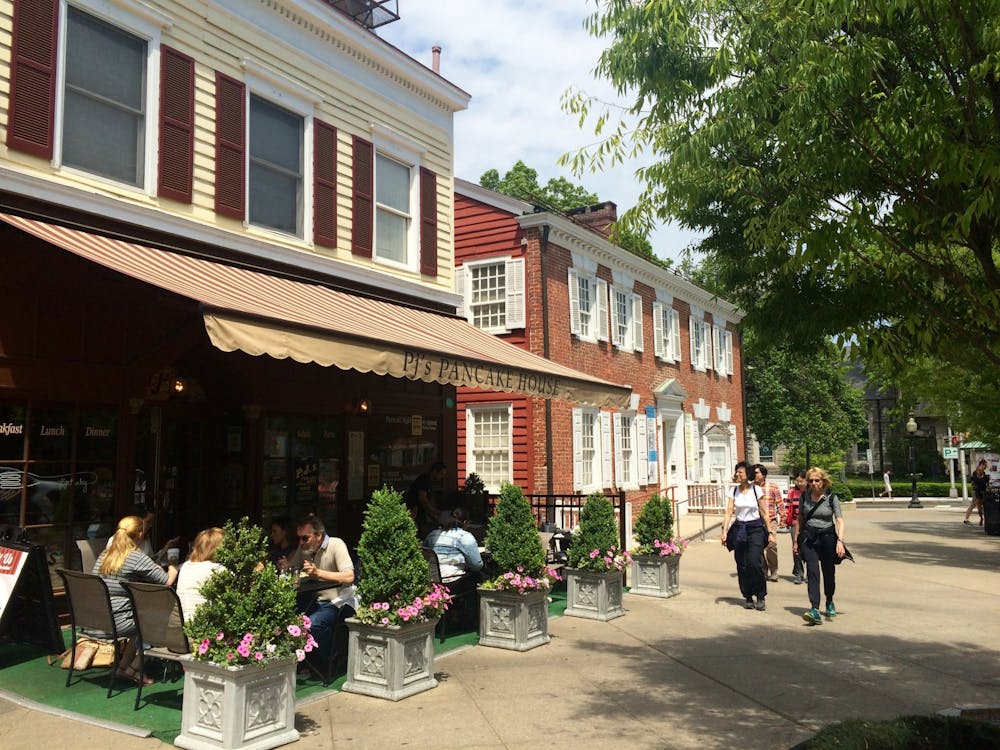Is it a coincidence that so much of our critical artistic vernacular recalls not only emotion but actually motion as well? I think not. Though I am, I must admit, a bit of an ignoramus when it comes to such things, but I suspect that art is "moving" and "uplifting" in more than just a stylistic sense.
Art is a minivan for the mind. Quite literally, it takes you places.
I'll come to my point before I trip over all these clichés: art is often rich with elaborate place-related suggestions. When we see a nobleman's portrait, for instance, our mind's eye conjures images of the England or France of yore, replete with castles, feasts, and jousts. These connotations are intrinsic to and vital for our experience of the work. In short, locale is often elemental.
A well-traveled art
And Tom McDermott's is a well-traveled art. A jazz musician by training, McDermott situates most of his music squarely in the Louisiana delta. Even to the untutored ear, his formal scores and improvisational riffs recall smoke-filled bars on Bourbon Street and wild riverboat casinos.
For McDermott, though, New Orleans is just a starting point. Latin America tangos, salsas, choros and funques its way into the 12- and 16-bar sets of his jazz standards. On his last two albums – "The Crave" and "Danza" – McDermott takes a look at the rhythms and melodies of the rest of the western hemisphere from his vantage point behind a rickety old French Quarter pian-er.
Recently, McDermott's journeying ways landed him here at Princeton. Last week, the Department of Spanish and Portuguese sponsored a musical lecture of sorts, in which he outlined some of his favorite Latin American music, the roots of its distinctive styles and especially their subtle links to American jazz.
'The key is in the percussion'
He opened with the honkytonk classic "The Entertainer," which he followed with several works by the noted Brazilian folk musician Ernesto Nazareth. Though "The Entertainer's" rowdy, raucous banging seemed a world apart from the simpler doodlings of Nazareth's Choro pieces, McDermott assured the audience that they are of the same blood.
"The key," McDermott noted, "is in the percussion." Many Latin American styles share with their American jazz counterparts an emphasis on syncopated rhythms. They accent the part of the beat left in the background by traditional western music, changing the tune's sound and feel. A practice rooted, he said, in the African heritage Latin American and American styles share.

With apologies for his sweeping generalizations, McDermott put a finer point on his argument by banging out a few examples of rhythms characteristic to the West African nations whose people were unwilling but plentiful immigrants to the western hemisphere. As he played, the line that separated jazz and Choro began to blur and the fraternal relations among the styles became clear. We in the audience bobbed our heads, tapped our feet and slapped our thighs to the African beats exactly as we had to the songs from this side of the Atlantic.
Fine lecture, better music
Having set the scene, McDermott moved on to a few of his own pieces. He had warned us at the beginning of the evening that he "played better than he talked," and he was right. Though he gave a fine lecture, his hands spoke louder and clearer still, as they tickled the ivories through "Choro" (Don't be confused. He wrote a song and named it after the style.), "Tango Aleman," and "Atrapado."
These originals took their basic structures from a variety of Latin American music but included extensive sections that would be familiar to anyone whose ears had never ventured out of the bayou. The fusion was seamless. Not for a moment was there a sense that McDermott had forced unwilling styles on one another.
For me, at least, McDermott's visit was a ticket to new travels. A longtime fan of Salsa, Samba, Tango, Choro et. al., I had always found my mind wandering southward when their familiar sounds swept over me. Likewise, time with Joplin or Gillespie had always been time on the swampy banks of the Mississippi. Now, though, I can't hear one without hearing, and thus visiting, the other.

What's more, I can slide in a McDermott disk and find myself defying the space-time continuum, existing at once on multiple latitudes. If music does indeed act as a kind of psychic transporter, then McDermott's songs are bargain packages.







